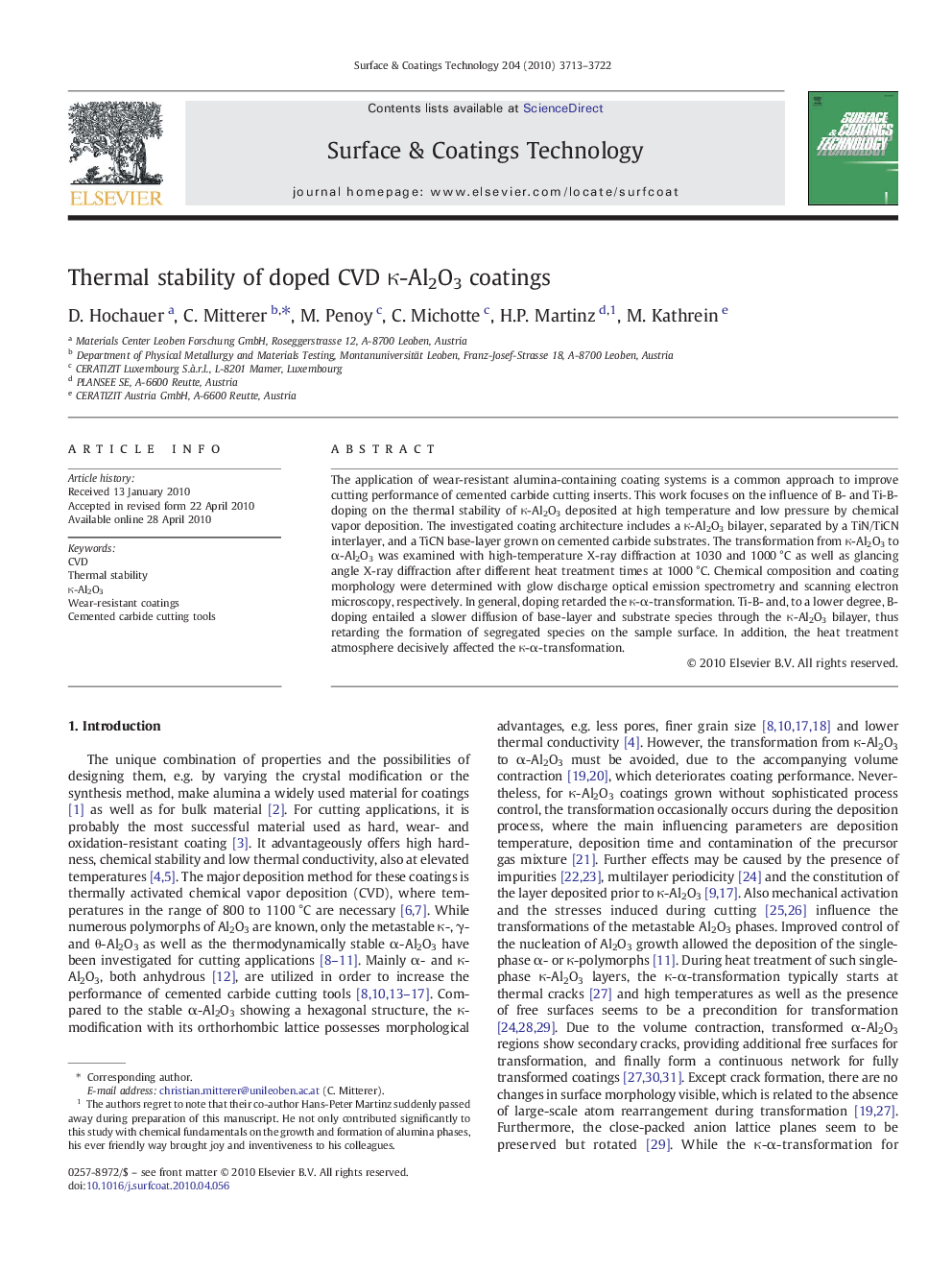| Article ID | Journal | Published Year | Pages | File Type |
|---|---|---|---|---|
| 1659176 | Surface and Coatings Technology | 2010 | 10 Pages |
The application of wear-resistant alumina-containing coating systems is a common approach to improve cutting performance of cemented carbide cutting inserts. This work focuses on the influence of B- and Ti-B-doping on the thermal stability of κ-Al2O3 deposited at high temperature and low pressure by chemical vapor deposition. The investigated coating architecture includes a κ-Al2O3 bilayer, separated by a TiN/TiCN interlayer, and a TiCN base-layer grown on cemented carbide substrates. The transformation from κ-Al2O3 to α-Al2O3 was examined with high-temperature X-ray diffraction at 1030 and 1000 °C as well as glancing angle X-ray diffraction after different heat treatment times at 1000 °C. Chemical composition and coating morphology were determined with glow discharge optical emission spectrometry and scanning electron microscopy, respectively. In general, doping retarded the κ-α-transformation. Ti-B- and, to a lower degree, B-doping entailed a slower diffusion of base-layer and substrate species through the κ-Al2O3 bilayer, thus retarding the formation of segregated species on the sample surface. In addition, the heat treatment atmosphere decisively affected the κ-α-transformation.
